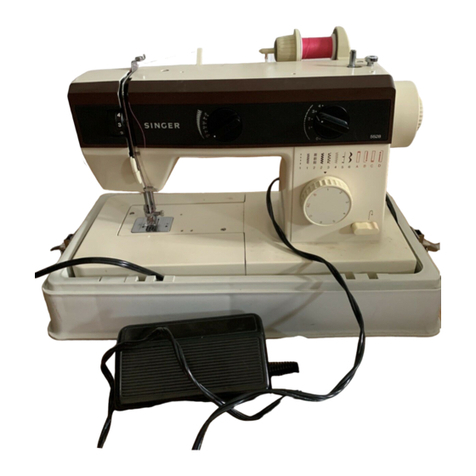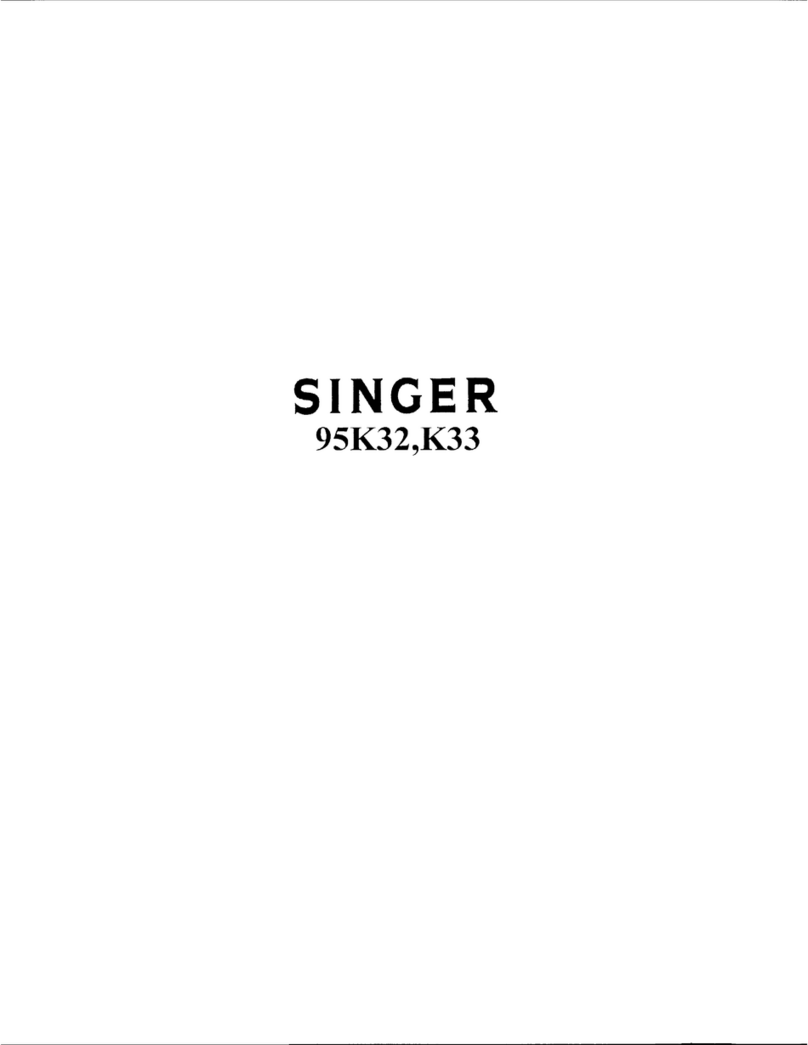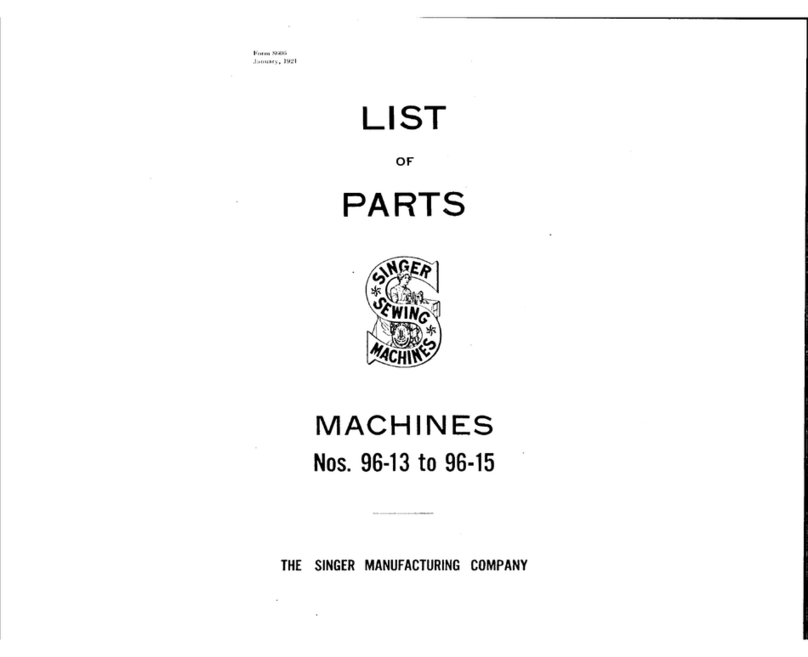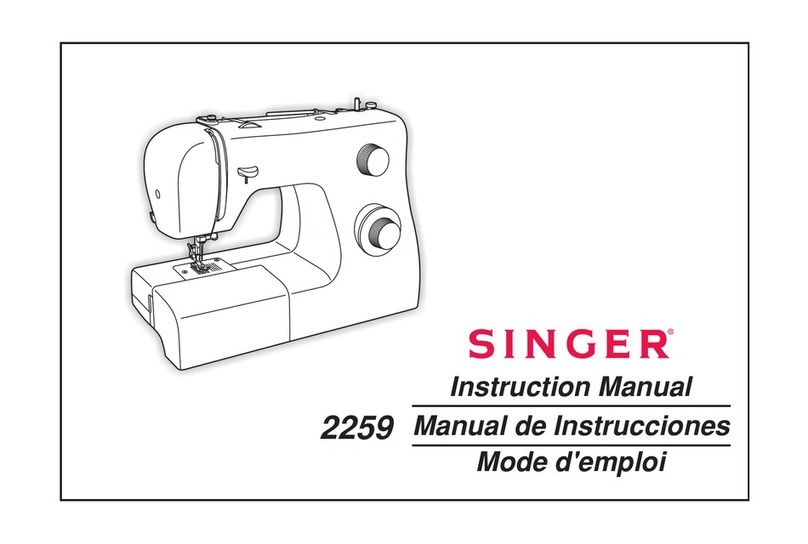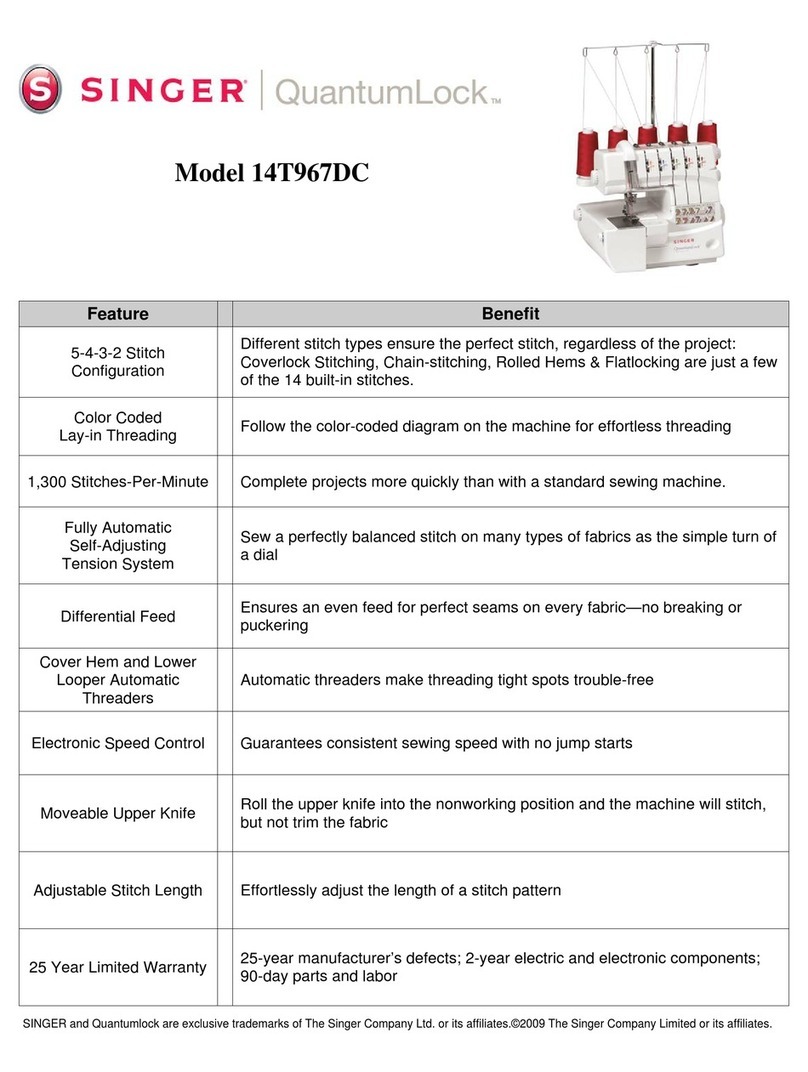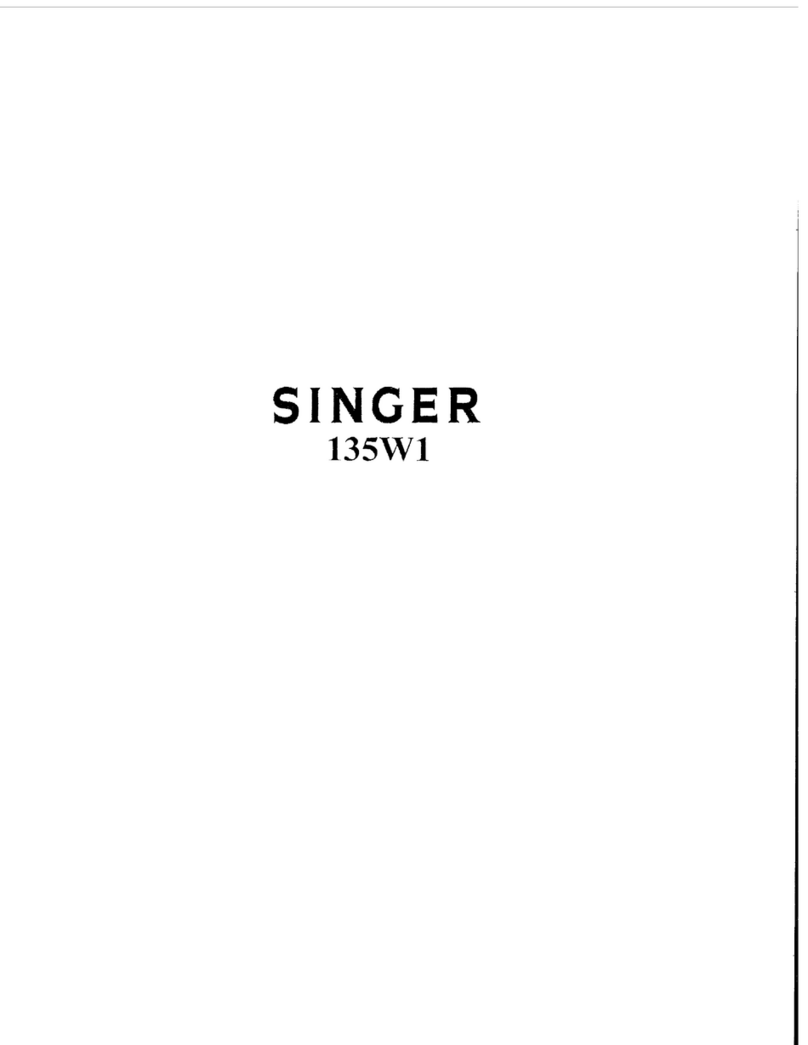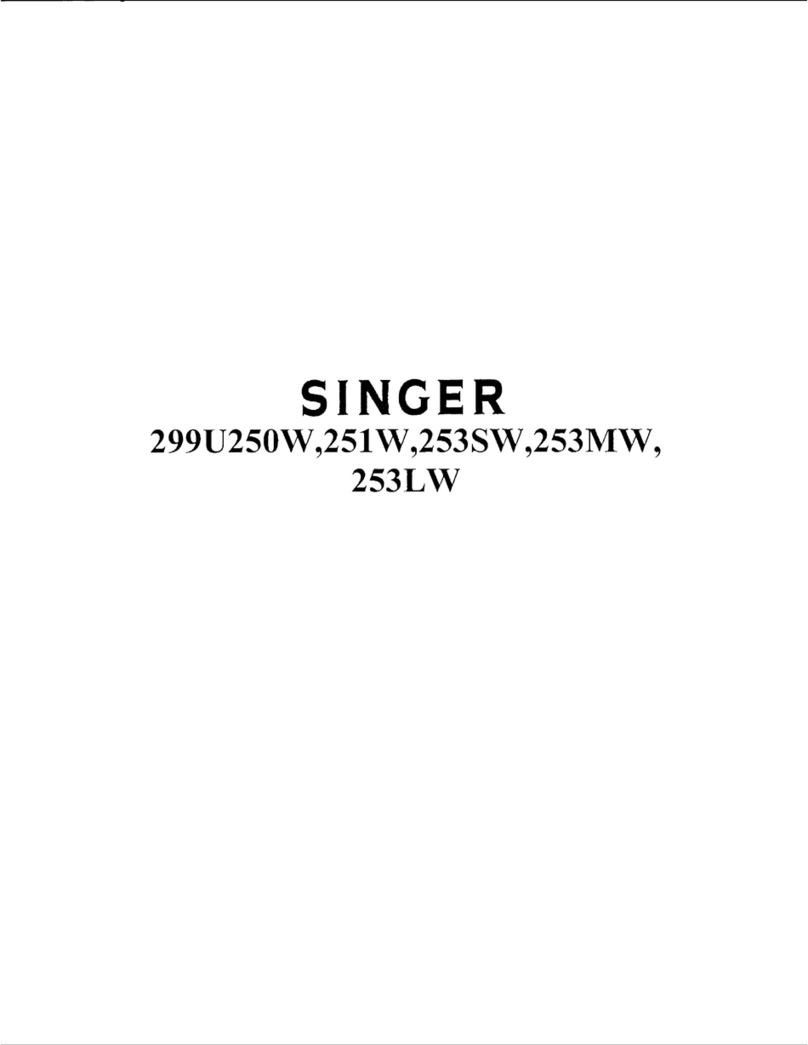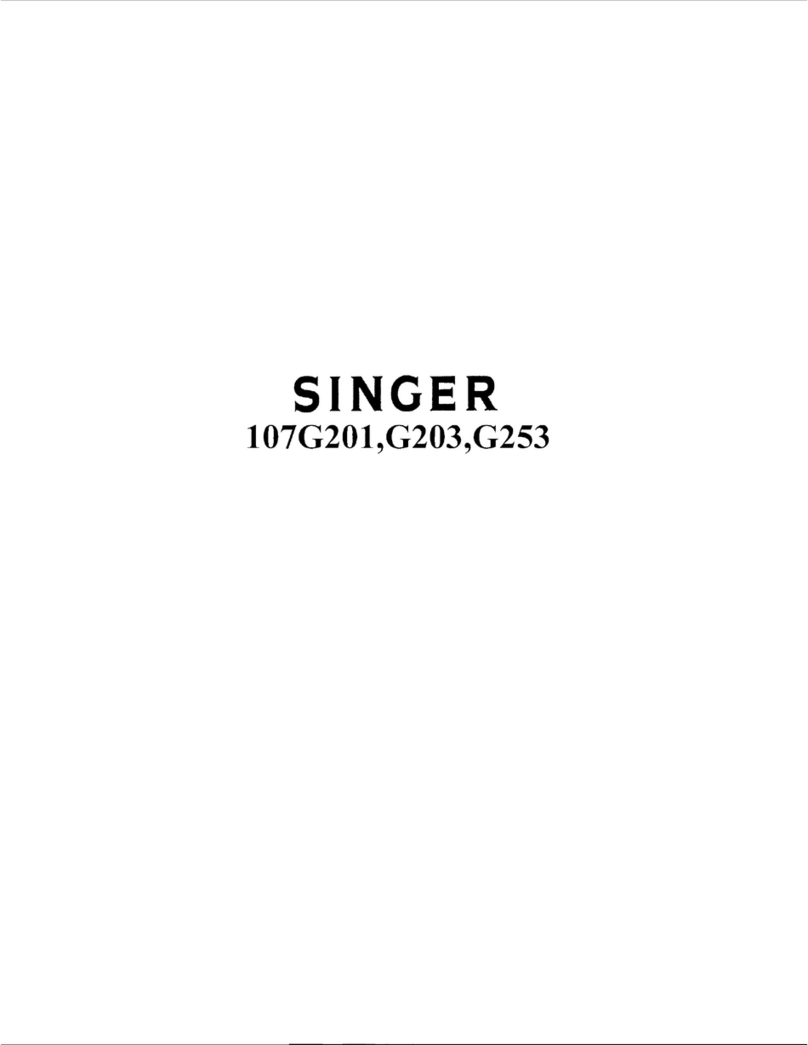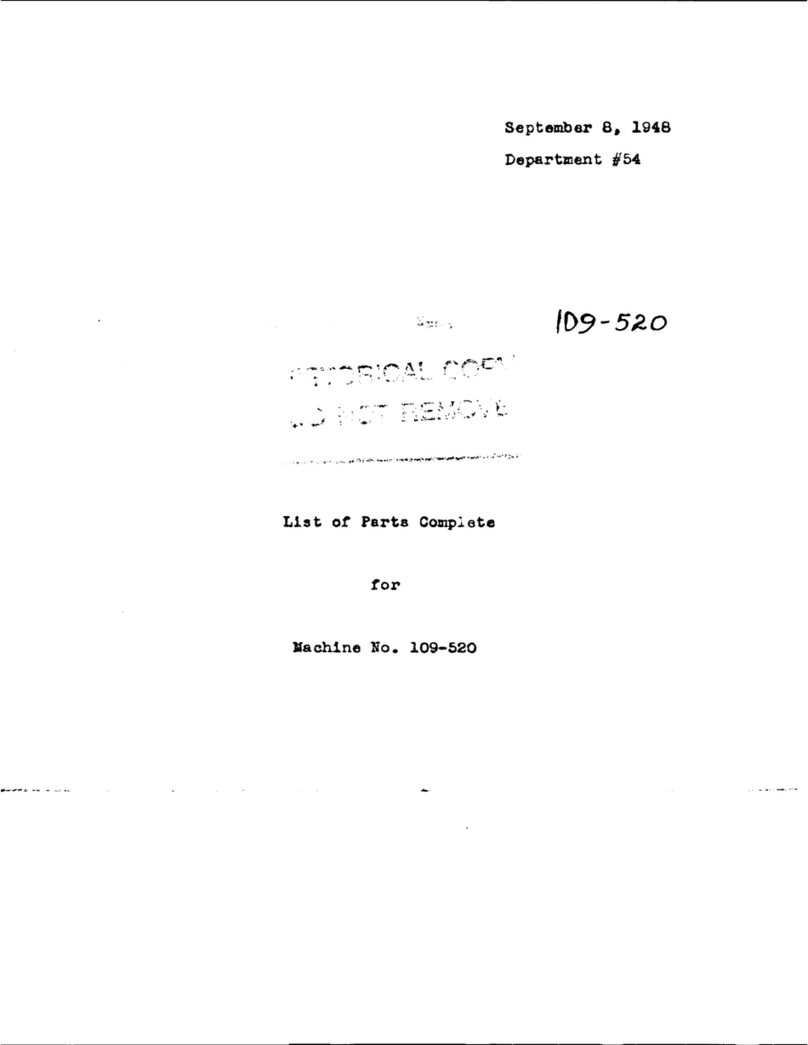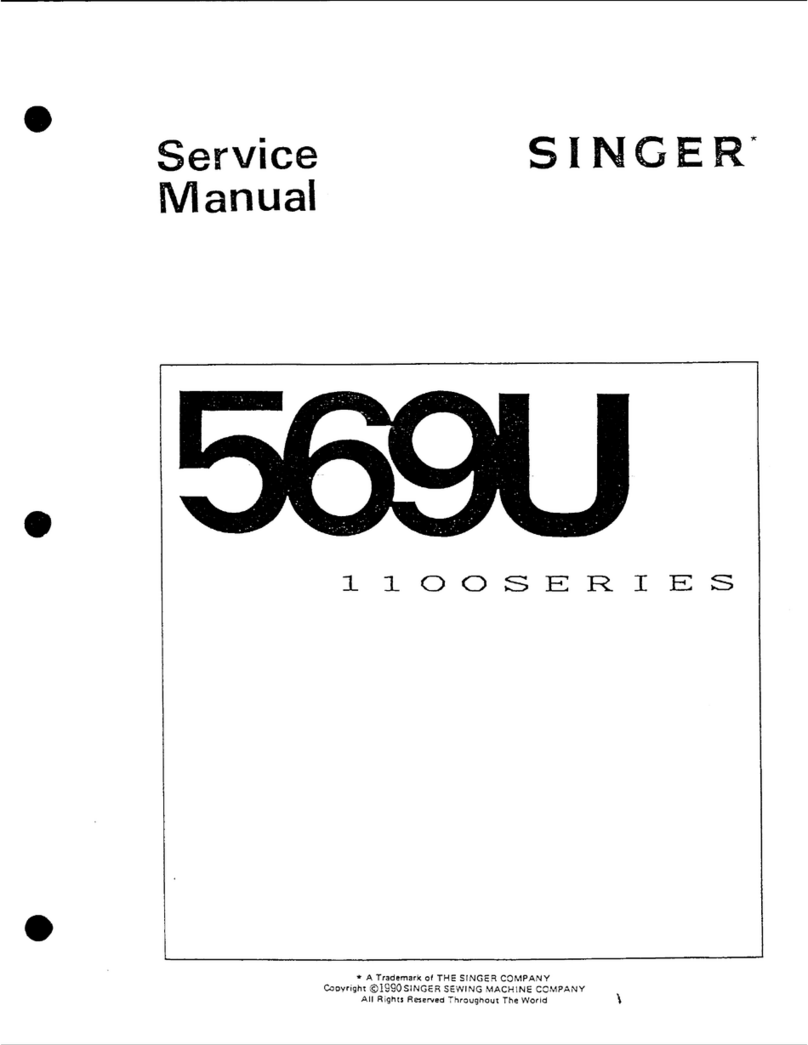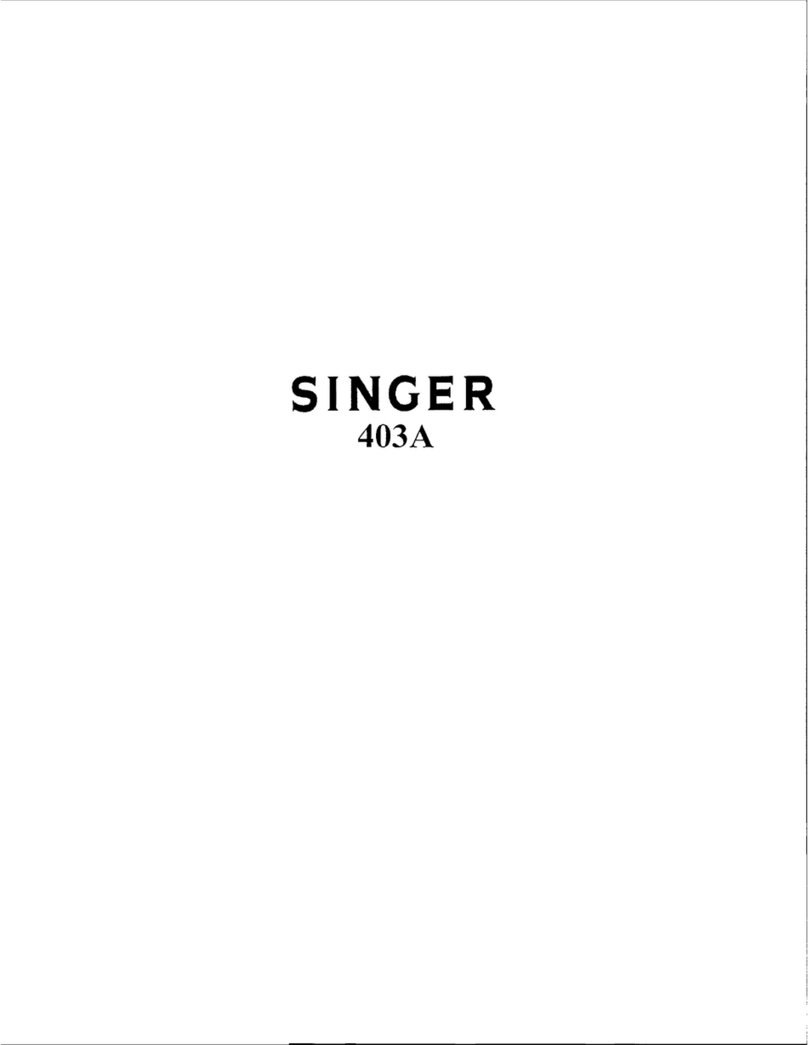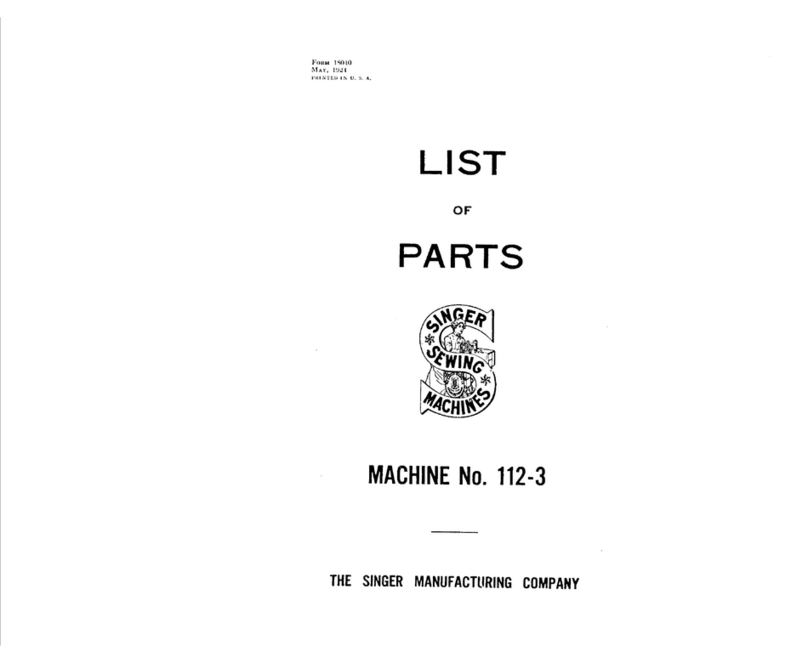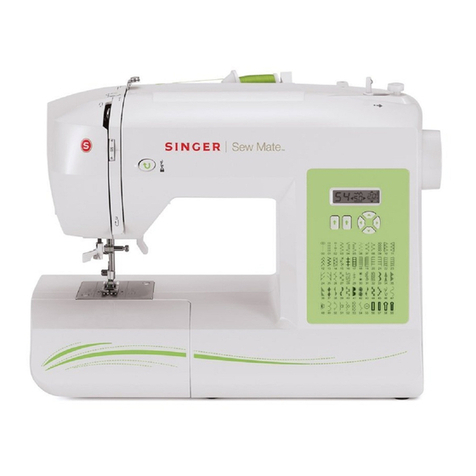
Singer Quantum Stylist TM 9960 3
ESD
ATTENTION!
It is of the utmost importance that precautions are being taken in order to avoid damage of the electronics
by electro static discharges ESD (=Electro Static Discharge). To avoid that these errors arise it is important
to handle loose circuit boards in a controlled way.
Electrostatic charges are caused by:
• When a person is walking (influence) over synthetic tilled or carpeted floor
• When its friction between and separation of two insulating materials.
If this static electricity discharges through electronic components, these may be partially or irreparably
damaged. Electrostatically charged persons represent the greatest danger for components. This can be dis-
sipated by controlled electrostatic discharge.
Always use wrist band when servicing.
Please note that on disposal, this product must be
safely recycled in accordance with relevant
National legislation relating to
electrical/electronic products. If in doubt please
contact your retailer for guidance.
Veuillez noter qu’en cas de destruction, ce produit doit
bénéficier d’un recyclage sécurisé, conforme à la
législation nationale applicable aux produits
électriques/électroniques. En cas de doute, veuillez
contacter votre distributeur agréé.
Bitte beachten Sie, dass hinsichtlich der Entsor-
gung dieses Produkts, vorschriftsmäßig entspre-
chend der gültigen nationalen Gesetzgebung für
elektrische/elektronische Produkte, recycelt
werden muss.Bei Zweifel setzen Sie sich bitte mit
Ihrem Fachhändler in Verbindung.
• All casted parts within our products are marked with name of
material if allowed by size.
• All molded plastic parts within our products are marked with name
of material if allowed by size.
• Innerhalb unserer Produktion werden alle gegossenen Teile mit dem
Materialnamen bezeichnet, wenn es deren Größe erlaubt.
• Innerhalb unserer Produktion werden alle geformten Teile mit dem
Materialnamen bezeichnet, wenn es deren Größe erlaubt.
• Toutes les pièces moulées (en métal) de nos produits sont marquées
du nom du matériau utilisé, quand la taille de la pièce le permet.
• Toutes les pièces moulées (en plastique) de nos produits sont
marquées du nom du matériau utilisé, quand la taille de la pièce le
permet.
